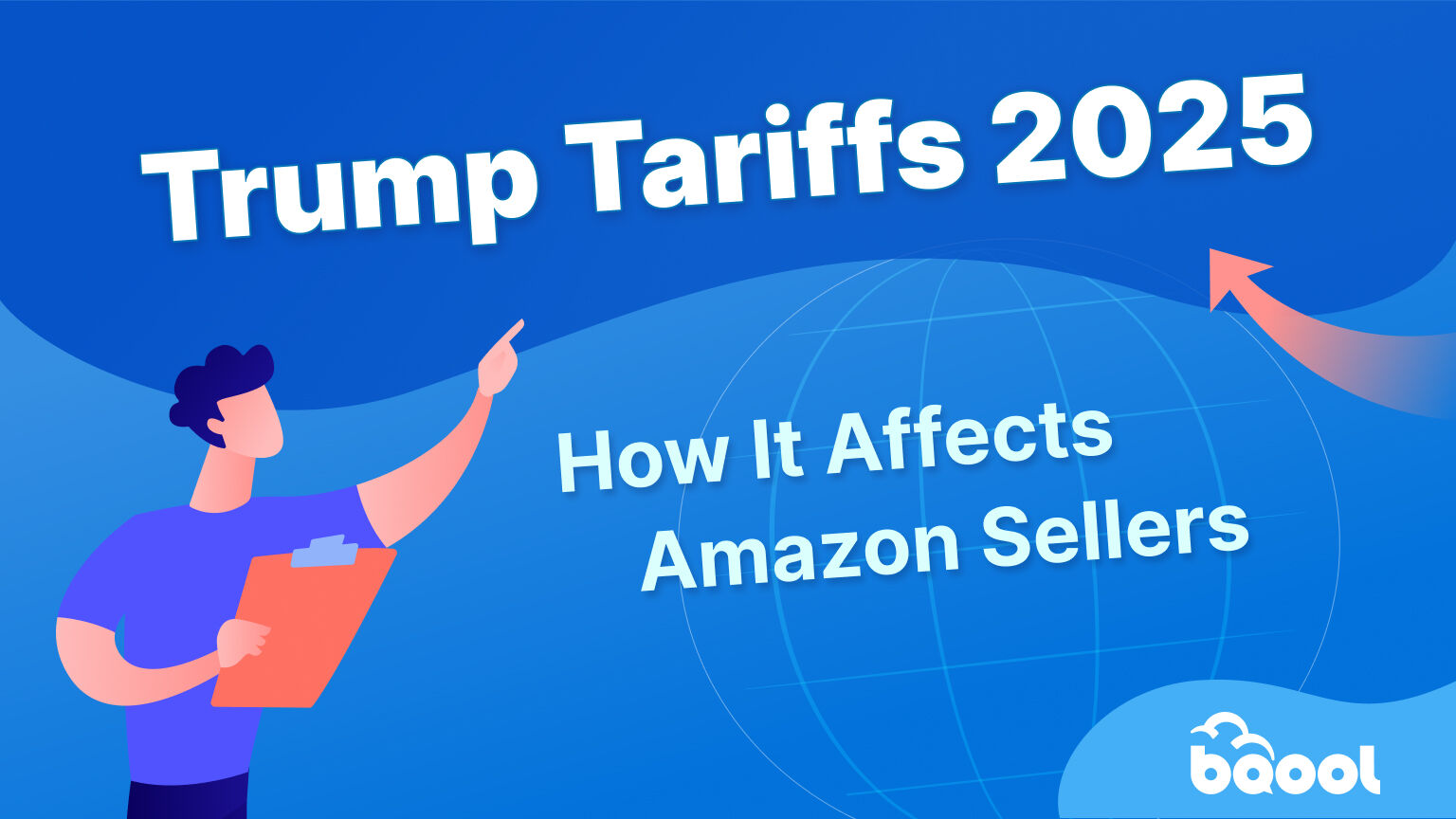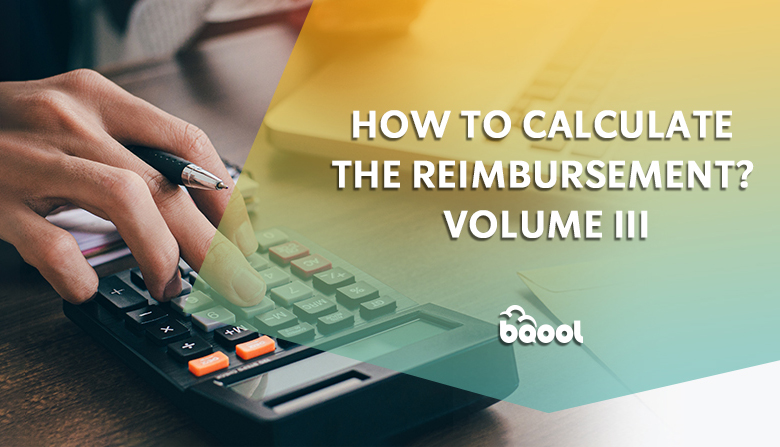How Will Trump’s Tariffs Impact Amazon Sellers

Since 2025, Trump has served as the 47th and current President of the United States. During his presidency, he imposed tariffs on importing countries, once reached as high as 145%, contributing to increased economic turbulence and instability. This economic turbulence is disrupting Amazon sellers’ sourcing, pricing, and inventory strategies. In this article, we’ll break down which countries are affected, how Amazon is responding, and how Trump’s tariffs affect Amazon sellers.
You’ll also learn how to stay ahead with proactive pricing strategies and supply chain planning, giving you a real chance to adapt before the tariffs take full effect.
Plus, we’ve created a Tariff Forecast Tool to help you estimate your updated landed costs once the tariffs are fully implemented.
When a country (USA) is losing many billions of dollars on trade with virtually every country it does business with, trade wars are good, and easy to win. Example, when we are down $100 billion with a certain country and they get cute, don’t trade anymore-we win big. It’s easy!
— Donald J. Trump (@realDonaldTrump) March 2, 2018
Overview
What Are the Trump Tariffs 2025?FREE BQool’s Tariff Forecast ToolWill Trump’s Tariffs Drive Up Prices on Amazon?What Are The Effects Of Trump’s Tariffs On Amazon Marketplace So Far?What Pricing & Inventory Strategies Should Sellers Use?Why Use BQool’s AI Repricer?How Can Sellers Source Alternatives Long-Term?How to Prepare for Prime Day & Q4?What Next Steps Should Amazon Sellers Take?Frequently Asked Questions
What are the Trump Tariffs 2025?
A tariff is a tax on imported goods, typically charged as a percentage of the item’s declared value. If you are based in the US, it directly increases your landed cost, which is the total cost of bringing goods into the country, including the product price, shipping, insurance, and duties.
Below are a few key concepts that sellers should know about tariffs:
- HTS Codes: Harmonized Tariff Schedule codes classify products for duty assessment. Accurate HTS classification ensures you pay the correct rate.
- De minimis Threshold: Low value imports (valued at or under $800) may be exempt from import taxes, however this order was eliminated for goods from China and Hong Kong as of May 2, 2025.
Why is Trump bringing back tariffs?
Trump’s 2025 tariff intiative is part of a broader effort to protect U.S. interests and reshape global trade dynamics. His main objectives is to protect American industries by making imported goods more expensive, and encourage domestic manufacturing by discouraging companies from producing goods overseas. While these tariffs aim to boost domestic growth, they also drive up costs for businesses and Amazon sellers who rely on imported inventory.
Which Amazon business model is most affected?
Business models that rely on importing goods are most affected:
- Private Label businesses are heavily impacted due to bulk imports.
- Wholesale businesses would be affected by rising supplier costs.
- Dropshipping (from overseas): Tariffs and customs delays could increase pricing and cause delays in shipments.
Country-specific tariffs for Amazon Sellers
The table below shows a set of countries for Amazon sellers (Source: Trump 2.0 Tariff Tracker):
Legend:
🟢 Implemented – Tariff is currently in effect
🟡 Delayed – Tariff has been scheduled but postponed
🟠 Threatened – Tariff has been pannounced, not yet applied
Country
Status
Rate
Effective Date(s)
All
🟢 Baseline
10%
April 5, 2025
China
🟢
20%
Feb 4, 2025
Vietnam
🟠
20%
Jul 2, 2025
Malaysia
🟠
25%
From April 2, 2025
India
🟠
26%
From April 2, 2025
Philippines
🟠
20%
July 9, 2025
Bangladesh
🟠
35%
July 9, 2025
Cambodia
🟠
36%
July 9, 2025
Indonesia
🟠
32%
July 9, 2025
Thailand
🟠
36%
July 7, 2025
Pakistan
🟠
29%
July 7, 2025
Mexico
🟢
0%
Mar 7, 2025 (except Potash (10%) & Fentanyl (25%))
Canada
🟢
0%
Apr 9, 2025 (except Energy & Potash (10%); and other products (25%)
BQool’s Tariff Forecast Tool
We’ve developed a tool that lets you calculate your landed cost in seconds, with a slider to adjust the percentage based on the latest tariff rates.
How it works
-
Select your source country.
-
Enter the figures that match your order.
-
Drag the slider to the correct tariff amount according to your country.
-
Watch the Total landed cost update instantly.
Real-Time Tariff Forecast Tool
Input the fields and see how much your total landed cost would be for your listing.
Quantity
1
Unit cost
$10.00
Baseline duty
$1.59
Section 301 duty
$0.75
Reciprocal duty
$2.00
Total landed cost
$14.34
Pro Tip: Bookmark this page so that when tariff news breaks, tweak one number and see your new costs right away.
Will Trump’s tariffs drive up prices on Amazon?
When the Cost of Goods Sold (COGS) suddenly increase, sellers are faced with three options:
- Raise listing prices, which can hurt conversion rates.
- Absorb the added costs, which cuts into profit margins.
- Pivot to new suppliers, which takes time, effort, and resources.
From now on, nearly every new shipment will arrive with higher tariffs, pushing list prices up with each restock.
If you haven’t already, now is the time to lock in updated cost projections, adjust your repricing rules, and start exploring alternative suppliers.
What are the effects Trump Tariffs on Amazon Marketplace so far?
Amazon Restock Limits
Back in 2020, Amazon set general inventory limits across your whole account. In 2025, those limits are stricter and more targeted applied to both your seller account and each product (ASIN). If one item has more than 90 days of supply, you can’t send in more, even if Amazon says you’re running low. These changes may be tied to rising tariffs and early prep for Prime Day 2025. (Source: Marketplace Prep, 2025)
How the New Limits Work
Amazon now enforces a 90-day inventory limit per ASIN at its fulfillment centers, based on your Days of Supply, a metric calculated from your sales over the past 7 to 14 days. Since this is a lagging indicator, it often fails to reflect recent restocks, product launches, or sudden sales spikes.
If Amazon determines that your current supply won’t last through your typical lead time, it flags the ASIN as Low Stock. However, you still might be blocked from sending more inventory if the Days of Supply data hasn’t updated yet. This creates a frustrating paradox: your listing is flagged as too low to meet demand, but also too “high” to allow a restock.
Even if you update your lead times or follow Amazon’s restock recommendations, the system may take time to recalculate. Until then, you could be temporarily locked out from replenishing crucial ASINs.
Updated FBA Capacity Limits
Amazon may reduce your FBA storage limits with little to no advance notice. In some cases, sellers have seen their capacity drop by as much as 70% compared to the previous month.
If this happens, you could find yourself over the new limit immediately, unable to send in more inventory, and even required to remove a portion of your current stock within just a few days.
These changes can significantly impact your inventory planning, so it’s important to monitor your capacity usage closely and have a backup strategy in place.
What You Can Do
To work around FBA limits, sellers can:
-
Clear excess inventory to free up space for better-selling ASINs.
-
Request more space through Capacity Manager.
-
Use Amazon Warehousing & Distribution (AWD) to store overflow and restock FBA gradually.
Start selling more on Amazon with BQool’s AI Repricer
Start your free trial
HS-code approvals for certain ASINs, causing delays.
New HTS/HS-code requirements force sellers to submit precise tariff classifications before FBA check-in, raising the risk of misclassification penalties, shipment rejections, and customs hold-ups (Carbon6). Reuters likewise notes that the expanded Section 301 duties have already led to longer customs clearance times and higher logistics costs, delaying many inbound shipments (Reuters).
What Pricing & Inventory Strategies Should Sellers Use?
- Pricing Tactics: Build tariffs into your COGS model; stage small price increases (2-5%) and lead the market.
- Inventory Management: Clear slow-moving stock before long-term storage fees hit.
- Diversify Sourcing: Check out suppliers in Vietnam, India, Mexico, or near-shore U.S to spread risk of relying on only one supplier.
- Explore Amazon business models like Online or Retail Arbitrage business models to diversify risk, as lead times with sourcing would not be an issue when you buy from online and retail stores. Rather than build up from scratch, check for which items are already selling and jump on the bandwagon. However, if U.S. retailers raise prices due to upstream import tariffs, it could reduce profitable arbitrage opportunities and shrink seller margins over time.
Why Use BQool’s AI Repricer When Tariffs Hit?
- Sell-Through Rate Condition: Available to FBA sellers, adjust your listing price based on each item’s real-time sell-through rate, so you hit the optimal turnover point even as costs fluctuate.
- Competitor Analysis: Monitor the top 20 competing offers for each ASIN, along with their inventory status (in stock, backordered, etc.), to help you target the Buy Box at the best possible price without eroding your margins.
- Inventory Age Condition: Filters for ASINs that have sat in your FBA warehouse for more than 90 days and apply targeted repricing to clear over-aged stock before storage fees and restock caps bite.
How Can Sellers Source Alternatives Long-Term?
According to Amazon expert Steven Pope (My Amazon Guy Podcast, 2025), Vietnam and India stand out for their high-quality output and lower costs, especially as trade policy shifts encourage diversification away from China. While sourcing from the U.S remains a long-term goal, the timing of a full transition is uncertain. Below is a projected timeline to guide your planning.
Source Market
Timeline
China
Current
Vietnam
Jul 9 ’25 onward (projected)
India
Jul 9 ’25 onward (projected)
U.S. & Near-Shore
2026+
Pro Tip: Start building relationships with sourcing partners nearer to you now to have a tariff-free advantage later.
How to Prepare for Prime Day & Q4 During Tariff Instability?
- Do Promotions & Coupons to boost velocity on ASINs hit by Trump tariffs.
- Provide Lightning Deals to clear slow-moving products.
- Send smaller, frequent batches to avoid inbound limits.
To learn more about how to prepare your marketing plan and optimize your ads budget this Prime Day, check out our Guide to Prime Day Marketing & Advertising 2025.
What Next Steps Should Amazon Sellers Take?
- Audit Your COGS and identify ASINs that face higher costs.
- Optimize your Inventory around fast-turning ASINs.
- Automate Pricing with BQool’s Repricer so that you can clear your inventory according to your preferences.
- Take proactive steps and don’t wait until you’re hit with hefty fees.
- Stay compliant and label your items correctly and pay the required fees. Mislabeling goods to avoid charges can lead to serious consequences.
FAQs
- Why does Trump want tariffs?
- Since the 1980s, President Trump has supported import tariffs to regulate trade and counter countries he sees as unfair to the U.S.
- Why is Trump putting tariffs on Canada and Mexico?
- As part of his “America First” agenda, President Trump imposed tariffs on imports from Canada and Mexico, prompting both to retaliate with tariffs on U.S. goods.
- Will Amazon be affected by Trump tariffs?
- Retailers expect leaner inventories, so holiday deals may be fewer and sell out faster during Prime Day, July Fourth, and Black Friday.
- What are the effects of tariffs on Amazon sellers?
- Amazon sellers are hiking prices on hundreds of best-selling items due to rising import costs from President Trump’s new tariffs. This leads to higher consumer prices, margin compression, and possible supply-chain disruption for sellers.
- Do I have to pay customs for a package from China in 2025?
- Starting May 2025, all goods from China and Hong Kong will be subject to 20% duties.
- What is the de minimis?
- The de minimis threshold is the minimum value of goods under which customs authorities do not impose duties or taxes when the goods are imported. Imports under $800 are normally exempt, but this exemption was revoked for goods from China effective May 2, 2025.
Win the Buy Box and get more sales today
Try BQool AI Repricer Free

Since 2025, Trump has served as the 47th and current President of the United States. During his presidency, he imposed tariffs on importing countries, once reached as high as 145%, contributing to increased economic turbulence and instability. This economic turbulence is disrupting Amazon sellers’ sourcing, pricing, and inventory strategies. In this article, we’ll break down which countries are affected, how Amazon is responding, and how Trump’s tariffs affect Amazon sellers.
You’ll also learn how to stay ahead with proactive pricing strategies and supply chain planning, giving you a real chance to adapt before the tariffs take full effect.
Plus, we’ve created a Tariff Forecast Tool to help you estimate your updated landed costs once the tariffs are fully implemented.
When a country (USA) is losing many billions of dollars on trade with virtually every country it does business with, trade wars are good, and easy to win. Example, when we are down $100 billion with a certain country and they get cute, don’t trade anymore-we win big. It’s easy!
— Donald J. Trump (@realDonaldTrump) March 2, 2018
Overview
What are the Trump Tariffs 2025?
A tariff is a tax on imported goods, typically charged as a percentage of the item’s declared value. If you are based in the US, it directly increases your landed cost, which is the total cost of bringing goods into the country, including the product price, shipping, insurance, and duties.
Below are a few key concepts that sellers should know about tariffs:
- HTS Codes: Harmonized Tariff Schedule codes classify products for duty assessment. Accurate HTS classification ensures you pay the correct rate.
- De minimis Threshold: Low value imports (valued at or under $800) may be exempt from import taxes, however this order was eliminated for goods from China and Hong Kong as of May 2, 2025.
Why is Trump bringing back tariffs?
Trump’s 2025 tariff intiative is part of a broader effort to protect U.S. interests and reshape global trade dynamics. His main objectives is to protect American industries by making imported goods more expensive, and encourage domestic manufacturing by discouraging companies from producing goods overseas. While these tariffs aim to boost domestic growth, they also drive up costs for businesses and Amazon sellers who rely on imported inventory.
Which Amazon business model is most affected?
Business models that rely on importing goods are most affected:
- Private Label businesses are heavily impacted due to bulk imports.
- Wholesale businesses would be affected by rising supplier costs.
- Dropshipping (from overseas): Tariffs and customs delays could increase pricing and cause delays in shipments.
Country-specific tariffs for Amazon Sellers
The table below shows a set of countries for Amazon sellers (Source: Trump 2.0 Tariff Tracker):
Legend:
🟢 Implemented – Tariff is currently in effect
🟡 Delayed – Tariff has been scheduled but postponed
🟠 Threatened – Tariff has been pannounced, not yet applied
| Country | Status | Rate | Effective Date(s) |
|---|---|---|---|
| All | 🟢 Baseline | 10% | April 5, 2025 |
| China | 🟢 | 20% | Feb 4, 2025 |
| Vietnam | 🟠 | 20% | Jul 2, 2025 |
| Malaysia | 🟠 | 25% | From April 2, 2025 |
| India | 🟠 | 26% | From April 2, 2025 |
| Philippines | 🟠 | 20% | July 9, 2025 |
| Bangladesh | 🟠 | 35% | July 9, 2025 |
| Cambodia | 🟠 | 36% | July 9, 2025 |
| Indonesia | 🟠 | 32% | July 9, 2025 |
| Thailand | 🟠 | 36% | July 7, 2025 |
| Pakistan | 🟠 | 29% | July 7, 2025 |
| Mexico | 🟢 | 0% | Mar 7, 2025 (except Potash (10%) & Fentanyl (25%)) |
| Canada | 🟢 | 0% | Apr 9, 2025 (except Energy & Potash (10%); and other products (25%) |
BQool’s Tariff Forecast Tool
We’ve developed a tool that lets you calculate your landed cost in seconds, with a slider to adjust the percentage based on the latest tariff rates.
How it works
-
Select your source country.
-
Enter the figures that match your order.
-
Drag the slider to the correct tariff amount according to your country.
-
Watch the Total landed cost update instantly.
Input the fields and see how much your total landed cost would be for your listing.Real-Time Tariff Forecast Tool
Quantity
1
Unit cost
$10.00
Baseline duty
$1.59
Section 301 duty
$0.75
Reciprocal duty
$2.00
Total landed cost
$14.34
Will Trump’s tariffs drive up prices on Amazon?
When the Cost of Goods Sold (COGS) suddenly increase, sellers are faced with three options:
- Raise listing prices, which can hurt conversion rates.
- Absorb the added costs, which cuts into profit margins.
- Pivot to new suppliers, which takes time, effort, and resources.
From now on, nearly every new shipment will arrive with higher tariffs, pushing list prices up with each restock.
If you haven’t already, now is the time to lock in updated cost projections, adjust your repricing rules, and start exploring alternative suppliers.
What are the effects Trump Tariffs on Amazon Marketplace so far?
Amazon Restock Limits
Back in 2020, Amazon set general inventory limits across your whole account. In 2025, those limits are stricter and more targeted applied to both your seller account and each product (ASIN). If one item has more than 90 days of supply, you can’t send in more, even if Amazon says you’re running low. These changes may be tied to rising tariffs and early prep for Prime Day 2025. (Source: Marketplace Prep, 2025)
How the New Limits Work
Amazon now enforces a 90-day inventory limit per ASIN at its fulfillment centers, based on your Days of Supply, a metric calculated from your sales over the past 7 to 14 days. Since this is a lagging indicator, it often fails to reflect recent restocks, product launches, or sudden sales spikes.
If Amazon determines that your current supply won’t last through your typical lead time, it flags the ASIN as Low Stock. However, you still might be blocked from sending more inventory if the Days of Supply data hasn’t updated yet. This creates a frustrating paradox: your listing is flagged as too low to meet demand, but also too “high” to allow a restock.
Even if you update your lead times or follow Amazon’s restock recommendations, the system may take time to recalculate. Until then, you could be temporarily locked out from replenishing crucial ASINs.
Updated FBA Capacity Limits
Amazon may reduce your FBA storage limits with little to no advance notice. In some cases, sellers have seen their capacity drop by as much as 70% compared to the previous month.
If this happens, you could find yourself over the new limit immediately, unable to send in more inventory, and even required to remove a portion of your current stock within just a few days.
These changes can significantly impact your inventory planning, so it’s important to monitor your capacity usage closely and have a backup strategy in place.
What You Can Do
To work around FBA limits, sellers can:
-
Clear excess inventory to free up space for better-selling ASINs.
-
Request more space through Capacity Manager.
-
Use Amazon Warehousing & Distribution (AWD) to store overflow and restock FBA gradually.
Start selling more on Amazon with BQool’s AI Repricer
Start your free trial
HS-code approvals for certain ASINs, causing delays.
New HTS/HS-code requirements force sellers to submit precise tariff classifications before FBA check-in, raising the risk of misclassification penalties, shipment rejections, and customs hold-ups (Carbon6). Reuters likewise notes that the expanded Section 301 duties have already led to longer customs clearance times and higher logistics costs, delaying many inbound shipments (Reuters).
What Pricing & Inventory Strategies Should Sellers Use?
- Pricing Tactics: Build tariffs into your COGS model; stage small price increases (2-5%) and lead the market.
- Inventory Management: Clear slow-moving stock before long-term storage fees hit.
- Diversify Sourcing: Check out suppliers in Vietnam, India, Mexico, or near-shore U.S to spread risk of relying on only one supplier.
- Explore Amazon business models like Online or Retail Arbitrage business models to diversify risk, as lead times with sourcing would not be an issue when you buy from online and retail stores. Rather than build up from scratch, check for which items are already selling and jump on the bandwagon. However, if U.S. retailers raise prices due to upstream import tariffs, it could reduce profitable arbitrage opportunities and shrink seller margins over time.
Why Use BQool’s AI Repricer When Tariffs Hit?
- Sell-Through Rate Condition: Available to FBA sellers, adjust your listing price based on each item’s real-time sell-through rate, so you hit the optimal turnover point even as costs fluctuate.
- Competitor Analysis: Monitor the top 20 competing offers for each ASIN, along with their inventory status (in stock, backordered, etc.), to help you target the Buy Box at the best possible price without eroding your margins.
- Inventory Age Condition: Filters for ASINs that have sat in your FBA warehouse for more than 90 days and apply targeted repricing to clear over-aged stock before storage fees and restock caps bite.
How Can Sellers Source Alternatives Long-Term?
According to Amazon expert Steven Pope (My Amazon Guy Podcast, 2025), Vietnam and India stand out for their high-quality output and lower costs, especially as trade policy shifts encourage diversification away from China. While sourcing from the U.S remains a long-term goal, the timing of a full transition is uncertain. Below is a projected timeline to guide your planning.
| Source Market | Timeline |
|---|---|
| China | Current |
| Vietnam | Jul 9 ’25 onward (projected) |
| India | Jul 9 ’25 onward (projected) |
| U.S. & Near-Shore | 2026+ |
How to Prepare for Prime Day & Q4 During Tariff Instability?
- Do Promotions & Coupons to boost velocity on ASINs hit by Trump tariffs.
- Provide Lightning Deals to clear slow-moving products.
- Send smaller, frequent batches to avoid inbound limits.
To learn more about how to prepare your marketing plan and optimize your ads budget this Prime Day, check out our Guide to Prime Day Marketing & Advertising 2025.
What Next Steps Should Amazon Sellers Take?
- Audit Your COGS and identify ASINs that face higher costs.
- Optimize your Inventory around fast-turning ASINs.
- Automate Pricing with BQool’s Repricer so that you can clear your inventory according to your preferences.
- Take proactive steps and don’t wait until you’re hit with hefty fees.
- Stay compliant and label your items correctly and pay the required fees. Mislabeling goods to avoid charges can lead to serious consequences.
FAQs
- Why does Trump want tariffs?
- Since the 1980s, President Trump has supported import tariffs to regulate trade and counter countries he sees as unfair to the U.S.
- Why is Trump putting tariffs on Canada and Mexico?
- As part of his “America First” agenda, President Trump imposed tariffs on imports from Canada and Mexico, prompting both to retaliate with tariffs on U.S. goods.
- Will Amazon be affected by Trump tariffs?
- Retailers expect leaner inventories, so holiday deals may be fewer and sell out faster during Prime Day, July Fourth, and Black Friday.
- What are the effects of tariffs on Amazon sellers?
- Amazon sellers are hiking prices on hundreds of best-selling items due to rising import costs from President Trump’s new tariffs. This leads to higher consumer prices, margin compression, and possible supply-chain disruption for sellers.
- Do I have to pay customs for a package from China in 2025?
- Starting May 2025, all goods from China and Hong Kong will be subject to 20% duties.
- What is the de minimis?
- The de minimis threshold is the minimum value of goods under which customs authorities do not impose duties or taxes when the goods are imported. Imports under $800 are normally exempt, but this exemption was revoked for goods from China effective May 2, 2025.
Win the Buy Box and get more sales today
Try BQool AI Repricer Free








